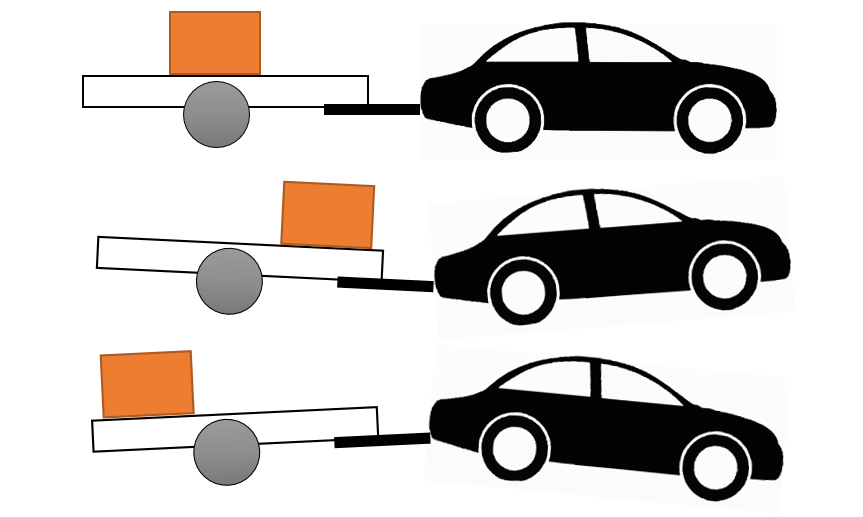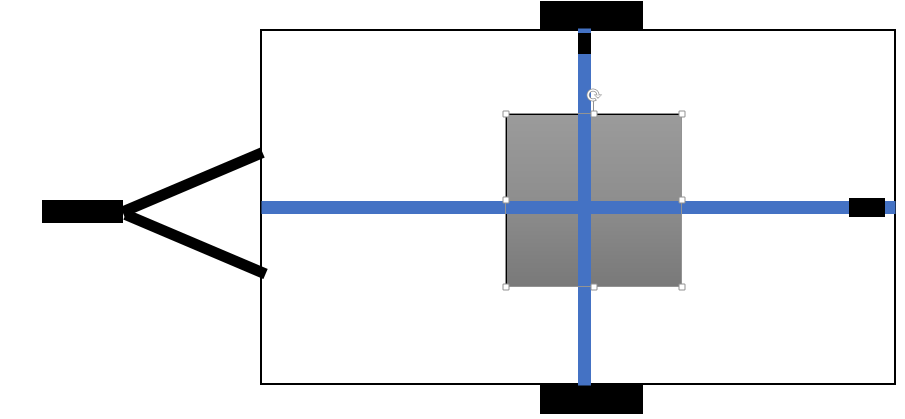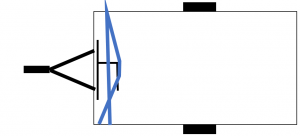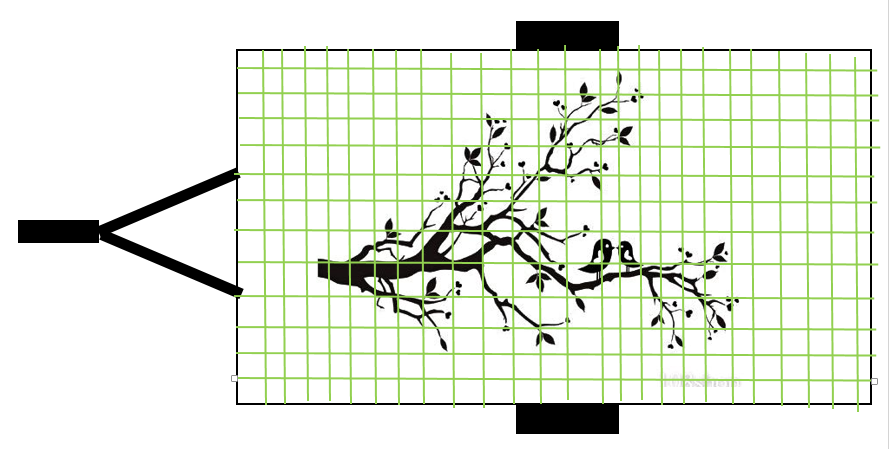Load and secure your trailer
Valeryd has several product ranges to secure the load on a trailer. Some things are presented here that you need to consider when you load and secure your trailer.
Ball pressure
The trailer loads the hitch with a specific pressure, this is called ball pressure. The ball pressure should lie between 30-100 kg.
If you have a single heavy object, for example a heavy box, this should be placed above or just in front of the axle (1), this will result in the ball pressure being neither positive nor negative.
If the load is placed too far forward the weight on the hitch will then increase, and the front end of the car will lift up (2), with glaring dipped beam and impaired steering capacity as a result.
If the load is placed too far back the load on the hitch will decrease, or it will even be negative (3). This means that the rear tyres loose pressure and grip on the road.

How do I load safely?
Several tips follow here, how you can load to secure things.
Heavy loads
A heavy load must be secured so that it is situated in the centre of the trailer, precisely above or in front of the axle. The load can be secured by lashing straps, but remember that the lashing straps must withstand as much as the load weighs, if the load weighs 500 kg the lashing straps must have a breaking strength of 500 kg. The load can be secured yet further by placing pallets or wooden blocks so the load cannot move sideways.

Lighter loads
Lighter loads can be distributed across the trailer surface, so that the height is as low as possible. Basic light objects can be placed against the front flap and lashed there. Everything on the trailer must be secured, nothing must be loose.

Garden waste
Garden waste such as branches or leaves are preferably loaded on the trailer with a cargo net. Cargo nets are good to have whether you have gates or not.


